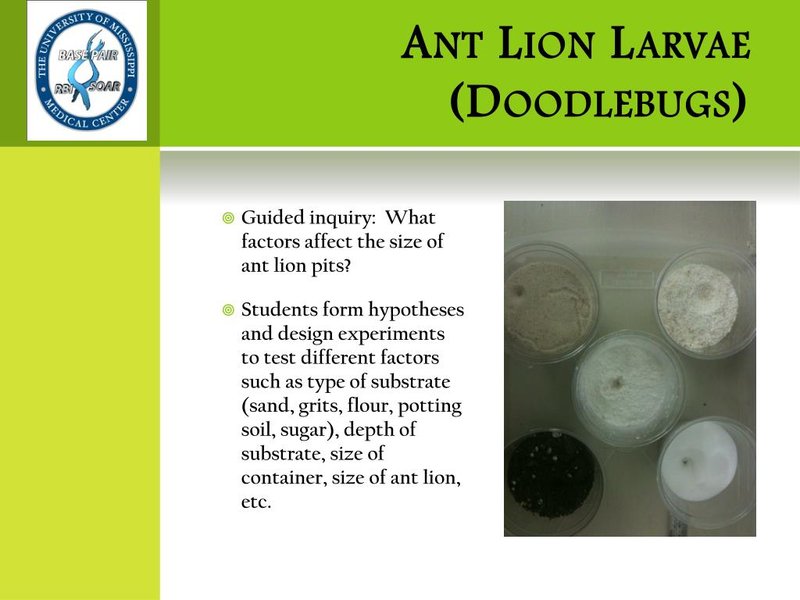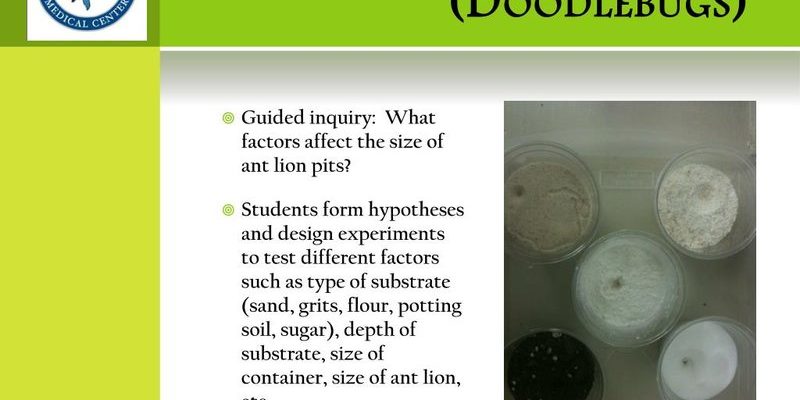
You might be wondering how to incorporate ant lion larvae into your curriculum. Think of it as a portal to understanding broader topics in biology and ecology. Whether you’re doing an experiment on metamorphosis or a demonstration on food chains, ant lion larvae are versatile tools. Let’s dive into how you can utilize these small but mighty creatures in your next science class.
What Are Ant Lion Larvae?
Ant lion larvae are the juvenile stage of the ant lion insect, a member of the Myrmeleontidae family. These larvae are known for their unique predatory behavior and peculiar form. They look like mini alligators, with elongated bodies and large jaws designed for snapping up prey.
Habitat and Behavior
Ant lions prefer sandy or loose soil where they can dig conical pits to trap unsuspecting ants and other small insects. When something tumbles into one of these pits, the larvae quickly spring into action, grabbing their prey with powerful jaws. Here’s the thing: this fascinating behavior can serve as a perfect demonstration of predator-prey relationships, allowing students to visually grasp concepts in ecology.
Why Use Them in Class?
By bringing ant lion larvae into the classroom, you’re not just teaching students about insects. You’re encouraging them to explore concepts like adaptation, survival, and life cycles. Plus, the excitement of watching these larvae in action can spark lively discussions and deepen understanding.
Setting Up Your Ant Lion Demonstration
Before diving into the demonstration, you’ll need to gather some supplies. Here’s what you’ll need:
- A clear container with sand (think a small aquarium or a terrarium)
- Ant lion larvae (available from various suppliers)
- Small insects or ants for feeding
- A notebook for observations
Creating the Environment
Start by pouring a few inches of sand into the container. Ensure it’s deep enough for the larvae to dig their pits. If you’re working with young students, guide them through creating a mini ecosystem. This hands-on approach can be enlightening, as they see firsthand how the larvae interact with their environment.
Introducing the Larvae
Once the habitat is prepared, gently place the ant lion larvae in the container. Explain to the students what they are seeing. You might want to have a few live insects ready to drop in for feeding. Watching the larvae eat is not only entertaining but also a great visual lesson in how predation works.
Educational Topics to Explore
Using ant lion larvae opens the door to a variety of educational topics. Here are some ways you can deepen the learning experience:
Life Cycles
Ant lions undergo a transformation from larva to adult. This metamorphosis can lead to discussions about the life cycles of other insects. You could even compare ant lions to butterflies, noting the differences and similarities in their developmental processes.
Ecology and Ecosystems
Discuss the role of ant lions in the ecosystem. Are they primary or secondary consumers? How do they fit into the food web? This can spark conversations about food chains, habitats, and the interconnectedness of life.
Adaptations
Ant lion larvae have evolved specific adaptations that make them effective predators. Explore topics like camouflage, hunting techniques, and how physical characteristics help them survive. Engaging students in thinking about adaptations can lead to fascinating discussions about evolution.
Common Challenges and Solutions
While working with live creatures can be thrilling, it’s not without challenges. Here are some common issues and how to address them:
Maintaining the Environment
If the sand dries out, the larvae might not thrive. Make sure to mist the sand lightly to keep it moist but not soggy. Encourage students to monitor the habitat’s condition regularly to understand their role in maintaining ecosystems.
Feeding the Larvae
Feeding can be tricky as well. Ants and small insects are essential for their diet. You might encounter issues if the students don’t have access to live insects. Consider discussing alternative methods, like using commercially available insect feed, and why it’s essential to provide the right diet for the larvae’s health.
Comparing Educational Methods
You might be thinking about how working with ant lion larvae stacks up against more traditional teaching methods. Here’s a little comparison:
Hands-On Learning vs. Lectures
Hands-on learning with live specimens like ant lions can often be more engaging than traditional lecturing. Students are more likely to remember concepts when they’re actively participating rather than passively listening.
Visual Learning vs. Textbook Learning
When students observe real-life interactions in nature, they can grasp complex concepts better. Seeing a predator catch its prey can leave a lasting impression, much more than a textbook description ever could.
Wrapping Up Your Demonstration
As the demonstration concludes, it’s important to reflect. Gather your students and discuss what they observed. Encourage them to share their thoughts on the ant lions’ behaviors and what surprised them the most.
Importance of Reflection
Encouraging students to reflect on their experiences helps deepen their understanding and retention of the material. You might even have them write a short report on what they learned, solidifying the knowledge gained during the demonstration.
In the end, using ant lion larvae in school science demonstrations not only makes for an exciting classroom experience but also enriches students’ understanding of biology and ecology. The small wonders of the natural world can lead to big questions and even bigger curiosity, paving the way for a lifelong love of learning. So why not give it a try? You might be amazed at what your students discover!

